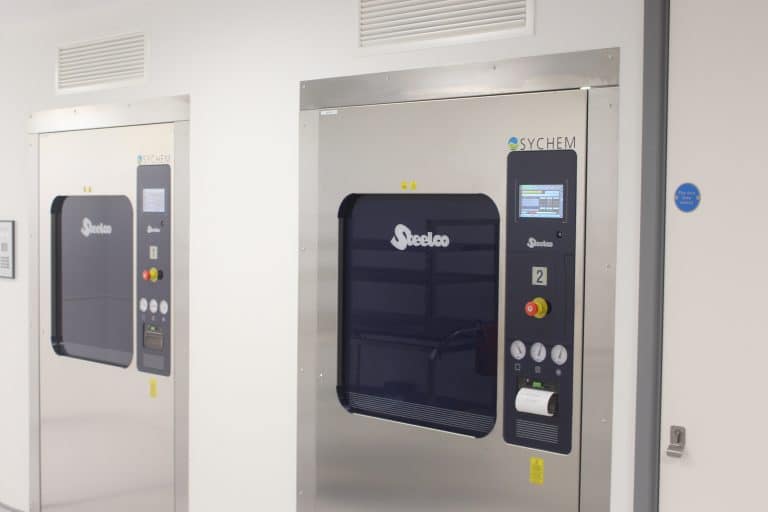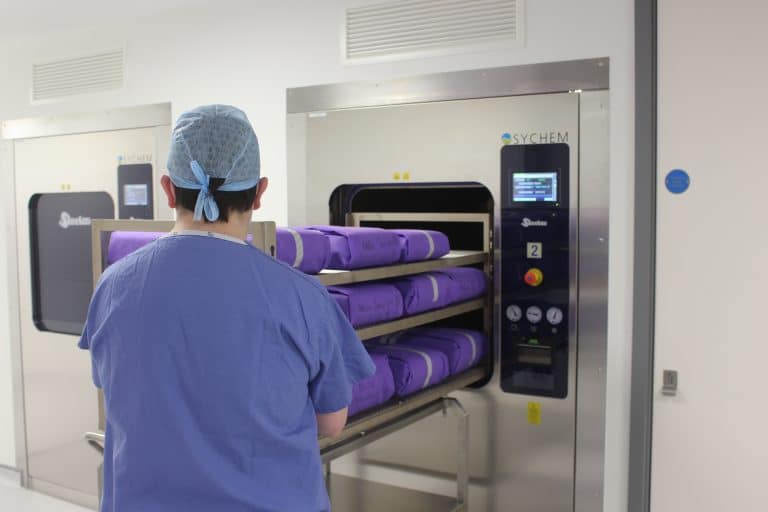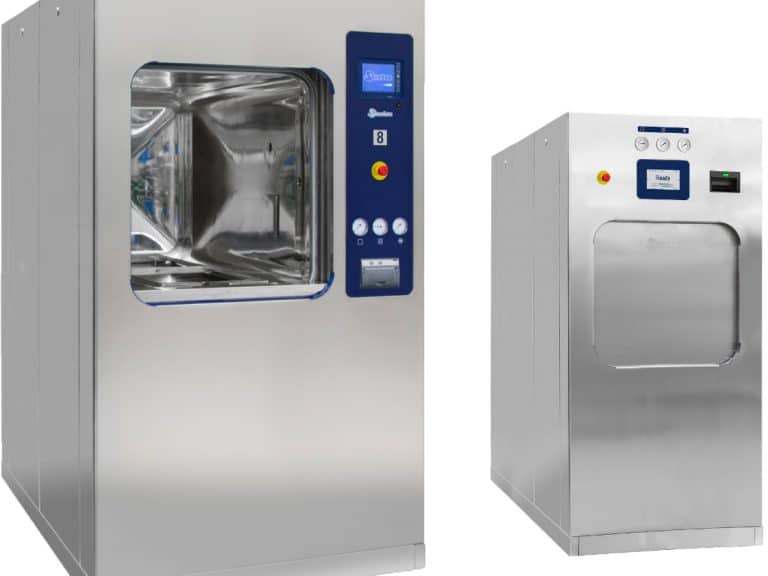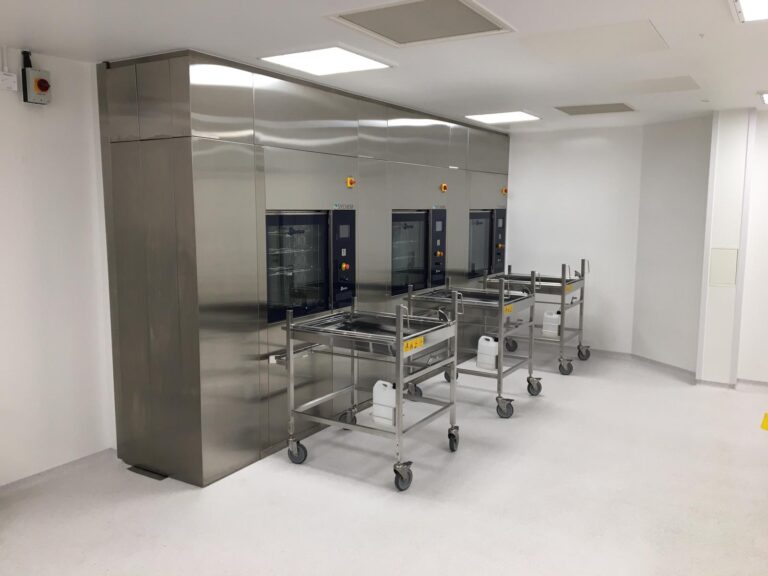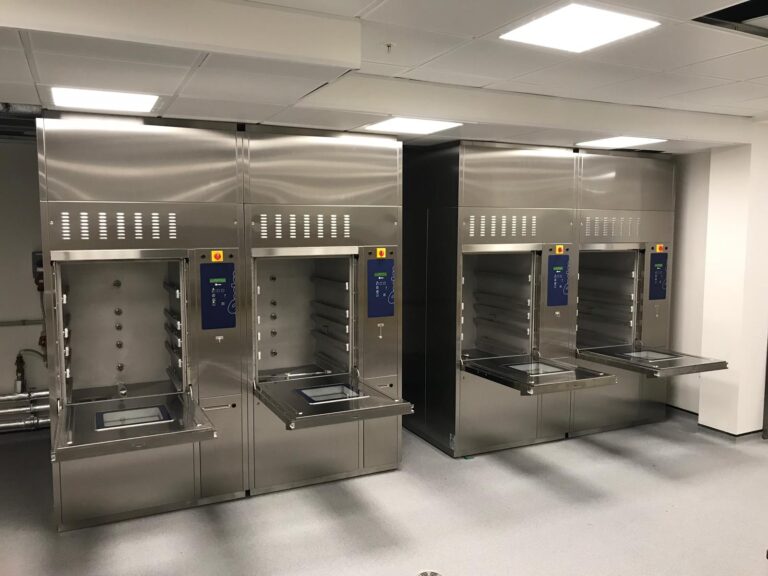At Sychem, we offer a complete portfolio of washing, sterilisation and decontamination equipment and consumables, designed for use in various sectors. We are industry-leading experts, and know how important it is to ensure that our customers understand the critical differences between sterilisation and decontamination.
Knowing these differences will assist our clients in deciding which equipment is the correct choice for their facility.
What is sterilisation?
The term sterilisation refers to any process that removes, kills or deactivates all life forms, including transmissible agents such as viruses, bacteria, fungi and spore forms. There are different sterilisation methods, depending on the different equipment and surfaces they are being used on. Various methods include heat, radiation, chemical and filtration.
At Sychem, we have a complete portfolio of steam sterilising autoclaves, manufactured by our Italian partner Steelco for use in a range of industries.
What is decontamination?
Decontamination is the process of removing contaminants on an object or surface, including chemicals, microorganisms or radioactive substances. This may be achieved by a chemical reaction, disinfection or physical removal.
There are three levels of decontamination: general cleaning, disinfection and sterilisation. Each of these levels of decontamination applies to items that may require cleaning. Depending on the contaminant itself and the severity of the spill, each method of decontamination may be used separately or together.
General cleaning
To begin, general cleaning processes are undertaken to help reduce the spread of bacteria. General cleaning processes cover the removal of the contaminated substance from surfaces using standard cleaning products and detergents. This is the first step in the decontamination process.
Disinfection
In the second decontamination stage, disinfection is slightly more advanced than general cleaning. The process of disinfection is defined as the removal of microbes from surfaces and objects to reduce the risk of infection, using chemicals or heat. Disinfection is not guaranteed to eliminate all microorganisms; however, it reduces their presence, thus preventing the spread of harmful bugs and diseases.
This is an example of a Steelco Life Science rack washer, a crucial piece of equipment in the disinfection step of the decontamination process.
Sterilisation
This is the final stage of the decontamination process. This is a process of removing or killing all viable organisms, including spores. Completing the last step ensures that decontamination is a process that destroys or removes all microbial contamination to render an item or the environment completely safe.
Is there a difference between sterilisation and decontamination?
Therefore, there is not so much a difference between sterilisation and decontamination, more that one cannot exist without the other. Without the final step of sterilisation, the complete decontamination process cannot occur, and therefore remains contaminated.
Where does the decontamination process take place?
Decontamination processes are carried out in several industries, including (but not limited to):
- Healthcare
- Laboratory
- Life Science
- Veterinary practises
- Dental clinics
- Facility Management
While these sectors are renowned for carrying out decontamination processes, they are not the only ones. There are many industries where decontamination processes take place, and the elimination of microorganisms is of paramount importance.
Decontamination equipment at Sychem
At Sychem, we offer a diverse range of decontamination equipment, supplied by our partner Steelco, who we have worked with since 2008 to provide a complete portfolio of washers and autoclaves for use in various sectors.
We also offer a range of V-PHP devices, predominately used in Pharmaceutical Manufacturing, Research and Laboratory, Biotechnology and Healthcare settings. We provide the Bioreset system, which uses Vaporised Hydrogen Peroxide (V-PHP) to carry out the sterilisation process. Vaporised Hydrogen Peroxide, also known as H2O2 gas sterilisation, it is a low temperature sterilisation process most used to sterilise heat sensitive devices and instruments.
Discover our full range of autoclaves and washers, or visit the Steelco webpage to learn more about their complete portfolio of decontamination equipment.









